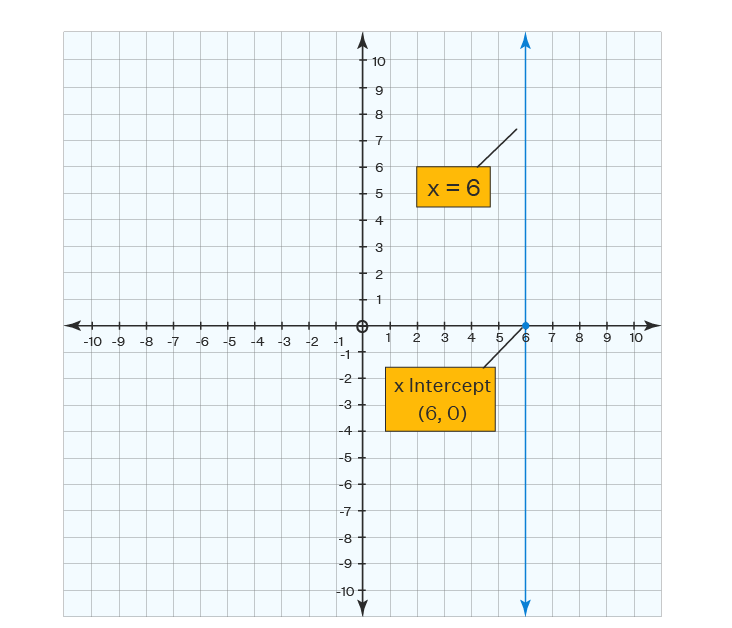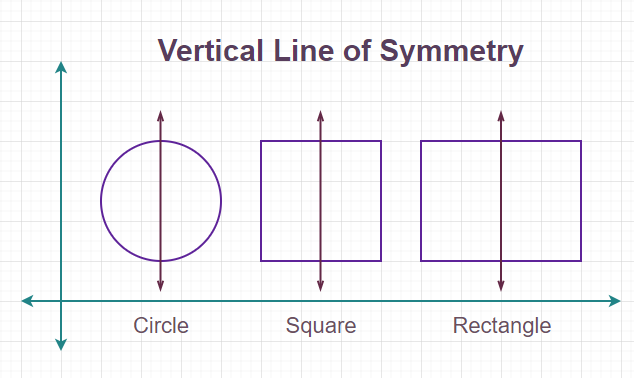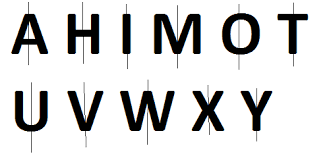
A Vertical line is a straight line that runs from top to bottom or from bottom to top and is perpendicular to a surface, or another line considered the base.
For example, the y-axis in a graph is a vertical line because it stands upright and forms a right angle with the x-axis, which acts as the base. Vertical lines are often called standing lines due to their straight, upright position.Vertical Lines in Real Life
Vertical lines are all around us in our everyday lives. You can see them in tall buildings, tree trunks, and table or chair legs. These are common vertical line examples in the real world.

Properties of Vertical Lines
Vertical lines have several distinct properties:- Vertical lines run up and down, always staying parallel to the y-axis. They do not cross or intersect the y-axis at any point.
- The equation of a vertical line is written as x = a, where a is a fixed real number. This means the x-coordinate for every point on the line is the same, and the y-coordinate can vary.
- The slope of a vertical line is undefined because the line does not move horizontally (there is no change in the x-coordinate). The run (horizontal change) is zero, so dividing by zero results in an undefined slope.
- When a vertical line intersects a horizontal line, they meet at a 90-degree angle, forming a right angle.
How to Draw Vertical Line?
Thinking about how to draw vertical line accurately? Drawing a vertical line is simple and can be done using either a ruler or a coordinate grid. Here’s how:Drawing a Vertical Line Using a Ruler
Step 1: Place the ruler in a standing position perpendicular to the edge of the page. Step 2: Draw the line by moving your pencil from bottom to top or top to bottom along the ruler's edge.Drawing a Vertical Line On a Coordinate Plane
To draw a vertical line on a coordinate grid, follow these steps: Plot a Point : Start by marking any point on the grid. For instance, plot the point (5,3). Identify the x coordinate: Note the x-coordinate of the plotted point (in this case, 5). Plot Another Point : Plot a second point with the same x coordinate but a different y coordinate, such as (5,−2). Join the Points : Use a ruler to connect the two points. The resulting line will be vertical, parallel to the y-axis.Uses of Vertical Lines
Vertical lines are widely used in various areas, from art and design to photography. They help create symmetry, emphasize height, and structure images in meaningful ways. Here are two common uses of vertical lines:Uses of Vertical Line in Symmetry
Slope of Vertical Lines
In coordinate geometry, the slope of a line is calculated by dividing the change in the y-coordinate (rise) by the change in the x-coordinate (run). The x-coordinate stays the same for all points for vertical lines, meaning the change in x (run) is always 0. For example, if you consider a vertical line passing through x = 4, the x-coordinate remains 4 no matter the y value. As you move along the line, the y coordinate changes, but there is no change in the x coordinate. This results in a zero run, making the slope undefined. In other words, since there's no horizontal movement, the slope can't be calculated, that’s why we say the slope of a vertical line is undefined.
Difference Between Horizontal and Vertical Lines
The table below shows the comparison between horizontal and vertical lines:| Difference Between Horizontal and Vertical Lines | ||
| Aspects | Vertical Line | Horizontal Line |
| Alignment | Runs parallel to the Y-axis | Runs parallel to the X-axis |
| Slope | Undefined | Always zero |
| Standard Form | Represented by x=a constant | Represented by y=a constant |
| Direction | Moves from top to bottom, or bottom to top | Moves from left to right, or right to left |
| Axis Intersection | Meets the X-axis at one specific point | Meets the Y-axis at one specific point |
| Appearance on Graph | Straight line oriented vertically | Straight line oriented horizontally |
| Examples | Equations include x=−2x or x = 7 | Equations include y= 3 or y=−6 |
| Angle with X-axis | Forms a 90° angle | Forms a 0° angle |
| Angle with Y-axis | Forms a 0° angle | Forms a 90° angle |
| Related Articles | |
| Subtraction Sums | Word Problems |
| What is an Abacus? | Math Puzzles |
| Multiplication Worksheets : | Multiplication Sums |
Vertical Line FAQs
What happens if a vertical line intersects another line?
Do vertical lines ever intersect the y-axis?
Can a vertical line be angled?
What happens when a vertical line crosses another line?
What are some examples of vertical lines in nature?











